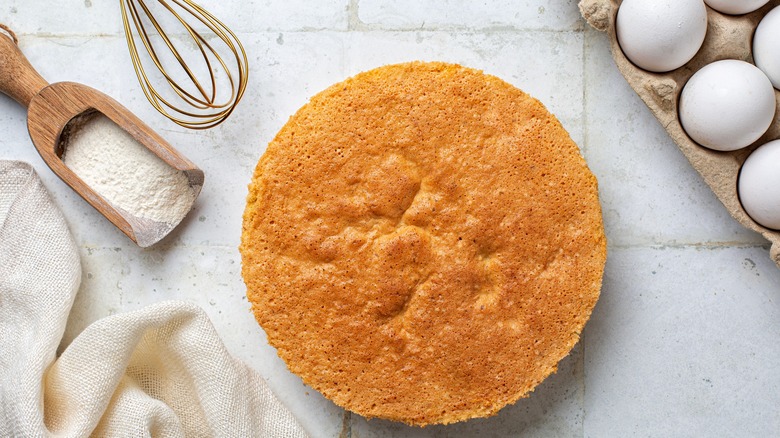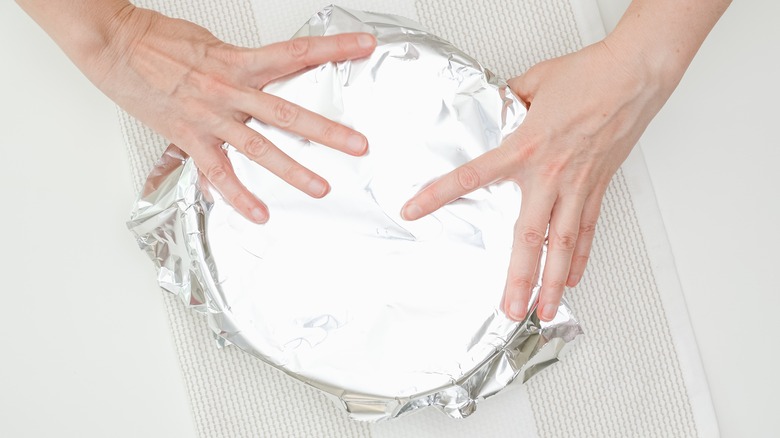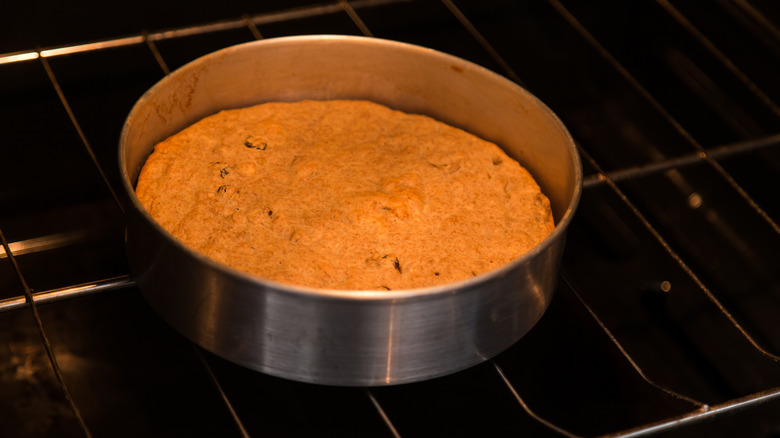The Easy Foil Hack For Moist, Evenly Baked Cakes Every Time
There's nothing more disappointing than going through all the trouble of measuring and mixing a cake only for it to come out of the oven less than perfect. You can set a timer and monitor the temperature in the oven with a thermometer, but dry, misshapen cakes can happen to any baker. Even worse, there's no way to avoid getting a crispy crust on the top — or is there? One ingenious Instagrammer has a hack that can solve all your most annoying cake dilemmas: Just cover the cake pan with some aluminum foil.
Covering a pan with foil isn't some sort of newfangled technique. In fact, you probably do it all the time to make sure a lasagna or tuna casserole cooks evenly. It works exactly the same way with a cake. All you have to do is cover your cake pan with foil, and you'll get a perfectly moist, evenly-cooked cake with no browning on the top.
It's called tenting
The practice of covering something in the oven with foil actually has a name: tenting. All it does is create a space between the foil and the food, which prevents steam (and thus the moisture) from escaping. The heat in the pan becomes more concentrated, and the food — in this case, the cake — cooks through evenly. This is a big difference from a conventional, uncovered cake, which bakes from the outside first, where the batter touches the hot pan, and the inside hopefully cooks before the edges get too crusty. Essentially, tenting the cake pan changes the cooking method from baking to steaming, which might sound a little weird, but it works great. If you're skeptical, think of it like a big bao bun, which is also steamed to stay soft and moist.
To tent a cake for baking, cake artist Shumaila Rai's hack is easy to do. Simply pour the batter into a greased cake pan, then cover the whole thing with foil. Then, poke a single hole in the center to vent the cake, pop it in the oven, and let the foil do all the work.
Check for doneness
"I've always done this, and I can say this works," said one commenter about the reel. "The cake is so much more textured and moist! And it also helps retain the color of your sponge cake; if it's vanilla, it'll come out all white, no brown crust."
A foil-covered cake will bake in about the same time as it takes to normally bake a cake, but it will be a little trickier to figure out when it's done since the top won't look golden brown. Instead of using a visual cue, the easiest way to check your cake for doneness is with a quick-read thermometer. A perfectly cooked cake should measure around 210 degrees Fahrenheit, according to Betty Crocker. Just poke the end of the thermometer into the cake through the hole in the foil to take a temperature reading, and pull it out of the oven when it's a few degrees shy of 210 to allow for some carryover cooking in the pan. Then, pull the foil off, let it cool, and it'll be ready to frost.


